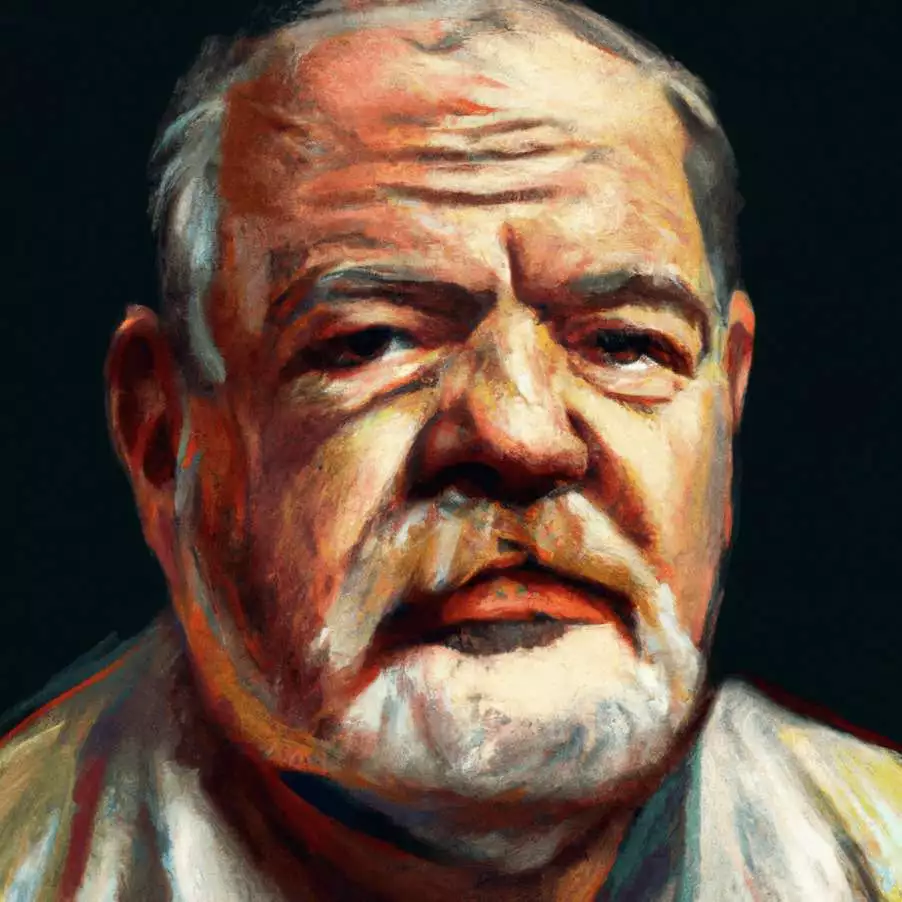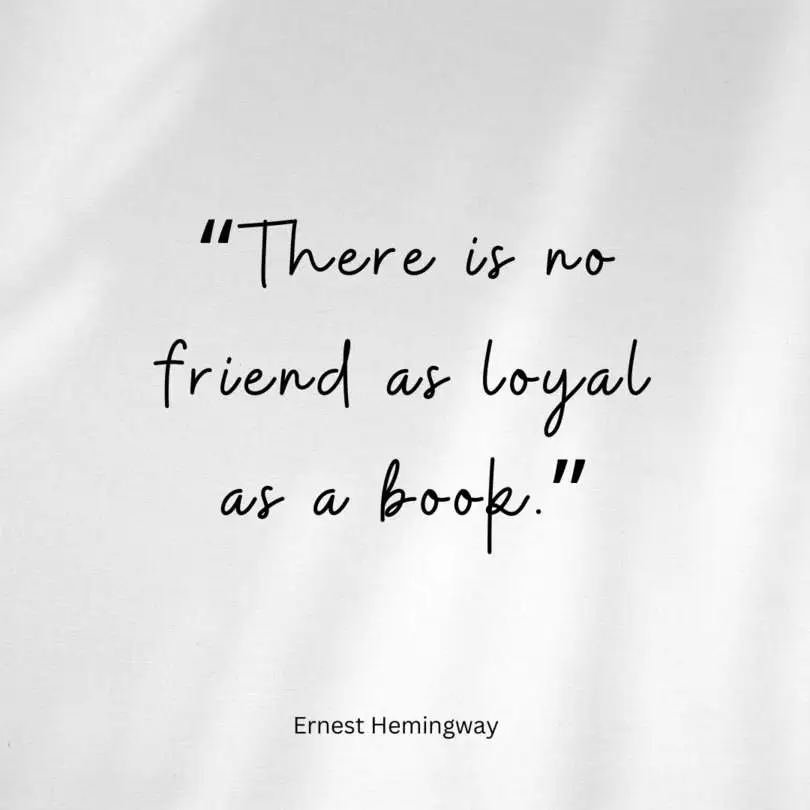Essay on Ernest Hemingway: A Literary Giant and Master of Prose
Ernest Hemingway, the iconic figure of 20th-century American literature, stands as a towering figure whose works have left an indelible mark on the literary landscape. Renowned for his succinct prose, unflinching portrayal of human nature, and adventurous life, Hemingway’s contributions to literature are immeasurable. This essay examines Hemingway’s curriculum vitae, explores his narrative works and stylistic features, provides a chronological list of his major works, examines public reception of his works, and offers intriguing trivia about this legendary writer.
Ernest Hemingway: The Adventurous Penman and His Extraordinary Journey
Ernest Hemingway, a name synonymous with literary prowess and a life lived with the gusto of his own characters, stands as a titan in the world of literature. Born on July 21, 1899, in Oak Park, Illinois, Hemingway’s life unfolded as a riveting tale of adventure, passion, and prolific writing. This essay embarks on a journey through the highs and lows of Ernest Hemingway’s life, from the battlefields of war to the serene landscapes of literature.

Early Years: The Seeds of a Wordsmith
Hemingway’s childhood in the quiet suburb of Oak Park was marked by the influences of a medical family – his father, a physician, and his mother, a musician. The young Ernest, surrounded by nature and the arts, developed an early appreciation for storytelling.
Hemingway’s love for adventure and the outdoors began at a young age. Family trips to the northern woods of Michigan and fishing expeditions with his father laid the foundation for the vivid nature imagery that would later grace his works.
World War I: A Baptism by Fire
In 1917, as World War I unfolded, Hemingway, eager for adventure, volunteered as an ambulance driver for the Red Cross in Italy. His time on the Italian front lines exposed him to the harsh realities of war and provided fodder for his later literary reflections on courage and camaraderie.
During this period, Hemingway was injured by mortar fire, an experience that would haunt him physically and emotionally for the rest of his life. This brush with mortality in the midst of war would become a recurring theme in his novels and short stories.
Post-War Paris: The Lost Generation
After the war, Hemingway settled in Paris, a city that became the vibrant backdrop for a community of expatriate writers known as the “Lost Generation.” In this artistic cauldron, Hemingway mingled with literary luminaries like F. Scott Fitzgerald, Gertrude Stein, and James Joyce. These interactions would shape his literary sensibilities and contribute to the forging of his distinctive writing style.
The Sun Also Rises: A Glimpse into the Roaring Twenties
In 1926, Hemingway published his first major novel, “The Sun Also Rises.” Set against the backdrop of post-war disillusionment and the vibrant excesses of the Roaring Twenties, the novel captures the zeitgeist of a generation grappling with the aftermath of war. The protagonist, Jake Barnes, reflects Hemingway’s own sense of disillusionment and the challenges of finding meaning in a world altered by conflict.
Marriage, Travel, and For Whom the Bell Tolls
Hemingway’s personal life was marked by his relationships, marriages, and an insatiable wanderlust. He married Hadley Richardson in 1921, and their life in Paris was marked by artistic fervor. However, as fame and success beckoned, so did the complexities of relationships.
Hemingway’s travels across the globe, from the bullfighting arenas of Spain to the savannahs of Africa, not only fueled his adventurous spirit but also provided settings for his novels. “For Whom the Bell Tolls,” published in 1940, draws upon his experiences during the Spanish Civil War, showcasing the intersection of love and conflict against a backdrop of political upheaval.
War Correspondent: The Spanish Civil War and World War II
Hemingway’s penchant for adventure led him to become a war correspondent during the Spanish Civil War. His reporting on the front lines provided firsthand accounts of the conflict, but it also deepened his sense of disillusionment with political ideologies.
During World War II, Hemingway continued his journalistic pursuits, covering the war in Europe for Collier’s magazine. His experiences informed his later works, including the novel “Across the River and Into the Trees,” which explores the impact of war on individuals and the inevitability of mortality.
A Farewell to Arms and the Nobel Prize
In 1929, Hemingway published “A Farewell to Arms,” a novel inspired by his experiences as an ambulance driver in World War I. The novel, hailed for its poignant portrayal of love and loss against the backdrop of war, solidified Hemingway’s literary reputation.
In 1954, Hemingway was awarded the Nobel Prize in Literature. The committee praised his mastery of the art of narrative and his influence on contemporary style. However, Hemingway, known for his humility, sent a simple telegram in response: “AWARERGARDHEM.”
Struggle with Mental Health and Declining Health
Beneath the veneer of Hemingway’s adventurous exterior, there lurked shadows of internal struggles. His experiences with war, the toll of multiple marriages, and a complex relationship with fame took a toll on his mental health. Hemingway battled periods of depression and, at times, sought solace in the numbing embrace of alcohol.
His declining health, exacerbated by various injuries and ailments, further complicated his later years. The man who once epitomized vigor and vitality found himself grappling with the frailties of mortality.
The Old Man and the Sea: A Triumph in Adversity
In 1952, Hemingway published “The Old Man and the Sea,” a novella that would become one of his most celebrated works. The story of an aging Cuban fisherman, Santiago, and his epic battle with a marlin, resonated with themes of endurance, resilience, and the inexorable cycle of life.
The novella earned Hemingway the Pulitzer Prize for Fiction in 1953 and contributed to his receipt of the Nobel Prize the following year. “The Old Man and the Sea” showcased Hemingway’s ability to distill profound themes into simple yet evocative prose.
Legacy and Farewell
Ernest Hemingway’s life came to a tragic end on July 2, 1961, when he took his own life. His passing marked the conclusion of a literary era, leaving behind a body of work that continues to captivate readers and inspire writers across the globe.
Hemingway’s legacy is multifaceted – a complex weave of adventure, introspection, and a distinctive writing style that forever altered the landscape of American literature. His impact extends beyond his novels; it’s embedded in the fabric of storytelling itself. As we revisit the pages of Hemingway’s works, we encounter not just the stories of his characters but the echoes of a life lived with unbridled passion, curiosity, and a relentless pursuit of the extraordinary in the ordinary.
Hemingway’s narrative works
Hemingway’s narrative works are renowned for their brevity, simplicity, and understated emotional power. His novels and short stories often feature themes of masculinity, stoicism, existential angst, and the human capacity for both greatness and destruction. Hemingway’s writing style, often referred to as the “Iceberg Theory” or “Hemingway’s style,” relies on concise, unadorned prose, leaving much unsaid and allowing readers to infer deeper meanings and emotions. This minimalist approach creates a sense of immediacy and realism, drawing readers into the heart of the narrative.

A chronological list of Hemingway’s major works provides a glimpse into his impressive literary oeuvre:
- “The Sun Also Rises” (1926)
- “A Farewell to Arms” (1929)
- “Death in the Afternoon” (1932)
- “Green Hills of Africa” (1935)
- “To Have and Have Not” (1937)
- “For Whom the Bell Tolls” (1940)
- “The Old Man and the Sea” (1952)
- “A Moveable Feast” (1964, posthumously published)
The public reception of Hemingway’s works has been nothing short of monumental. His debut novel, “The Sun Also Rises,” catapulted him to literary stardom, and he became a leading figure of the “Lost Generation” in post-World War I literature. Hemingway’s direct, unembellished writing style was both praised and criticized. Some lauded his stripped-down prose for its authenticity and emotional resonance, while others felt it lacked depth and complexity. However, Hemingway’s influence on subsequent generations of writers and his enduring popularity cannot be denied.
Trivia about Ernest Hemingway offers fascinating insights into his life and literary legacy:
- Hemingway was an avid sportsman and loved hunting, fishing, and bullfighting. His passion for outdoor activities often found its way into his writings, adding a sense of adventure and authenticity to his stories.
- Hemingway’s experience as an ambulance driver during World War I led to him being wounded and awarded the Italian Silver Medal of Bravery for his heroic actions.
- He survived two plane crashes in Africa, one of which left him with severe injuries. These experiences reinforced his perception of mortality and influenced his writing of “The Old Man and the Sea.”
- Hemingway was awarded the Nobel Prize in Literature in 1954 for his mastery of the art of narrative and his influence on contemporary writing.
Conclusion
Ernest Hemingway’s enduring literary legacy lies in his ability to distill complex human emotions and experiences into powerful, evocative prose. His impact on the American literary canon is immeasurable, and his work continues to resonate with readers of all generations. Hemingway’s exploration of themes such as war, love, masculinity, and the human struggle for meaning and authenticity ensures his place as a literary giant whose contributions to literature and writing techniques will forever be celebrated.
Reviews of works by Ernest Hemingway
Death in the Afternoon
Bulls, Bravado, and the Art of Life – A Review of “Death in the Afternoon”…
To Have and Have Not
Navigating Desperation and Desire: A Summary of “To Have and Have Not” by Ernest Hemingway…
The Snows of Kilimanjaro
An Evocative Expedition of Emotions: “The Snows of Kilimanjaro” by Ernest Hemingway “The Snows of…
The old man and the sea
A Timeless Tale of Resilience and Redemption: Ernest Hemingway’s “The Old Man and the Sea”…
Fiesta
Review of “Fiesta” by Ernest Hemingway: With Intensity into the Heart of Passion Ernest Hemingway,…
For Whom the Bell Tolls
A Profound Exploration of War, Love, and Humanity: Ernest Hemingway’s For Whom the Bell Tolls…





